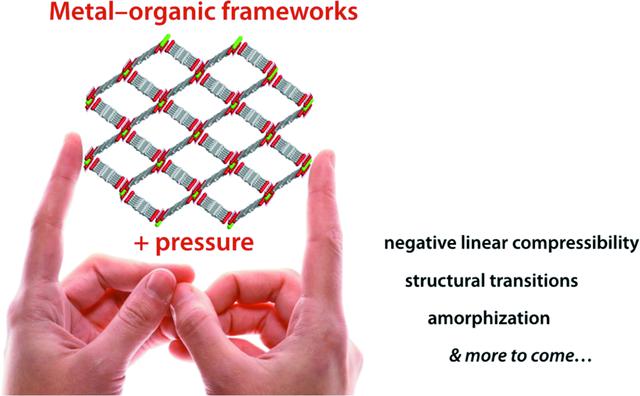Metal-organic frameworks: the pressure is on
Metal-organic frameworks (MOFs) are currently the subject of over a thousand research papers per year and have attracted the attention of many research groups across the world. This is the result of a predisposition for structural diversity, tuneable properties and timely relevance to a range of technological applications.
have attracted the attention of many research groups across the world. This is the result of a predisposition for structural diversity, tuneable properties and timely relevance to a range of technological applications.
MOFs, demonstrate a wide variety of behaviour in their response to pressure [Coudert, F.-X. (2015). Acta Cryst. B71, doi:10.1107/S2052520615020934]. A growing number of materials in this topical family have been shown to be stimuli-responsive, with most of the attention paid to structural transitions upon temperature change and guest adsorption or evacuation – including some eye-catching phenomena with names such as gate opening and breathing. However [McKellar, S. C. & Moggach, S. A. (2015). Acta Cryst. B71, doi:10.1107/S2052520615018168] show in their feature article, pressure is a powerful thermodynamic variable which can be varied within a wide range and is tensorial in nature (compared with e.g. the scalar nature of temperature). Being built partly on weaker interactions than traditional inorganic microporous materials, and because they reach ultra-high porosities, MOFs tend to be generally more compressible than, say, zeolites. This magnifies their unusual responses to the application of high pressures, with large-scale changes of structure and properties upon modest stimulation, and can in turn be leveraged into devices and applications. McKellar and Moggach have reviewed the recent literature in this rapidly growing field, highlighting some of the key behaviours that have been observed in MOFs.
This story is a short extract reprinted from a commentary published in the journal Acta Crystallographica Section B: Structural Science, Crystal Engineering and Materials


